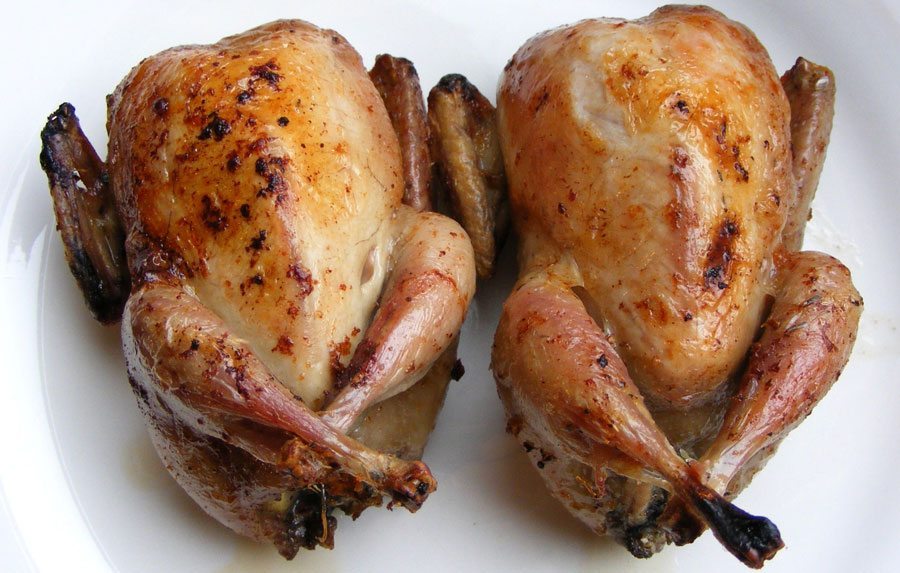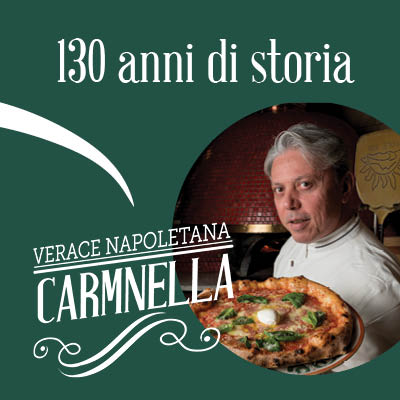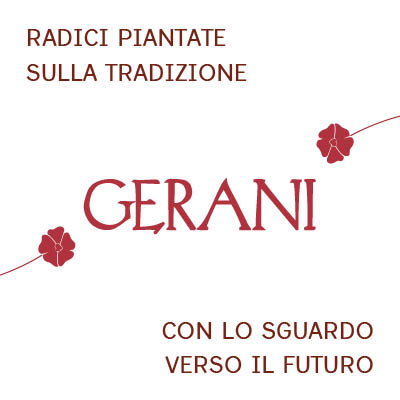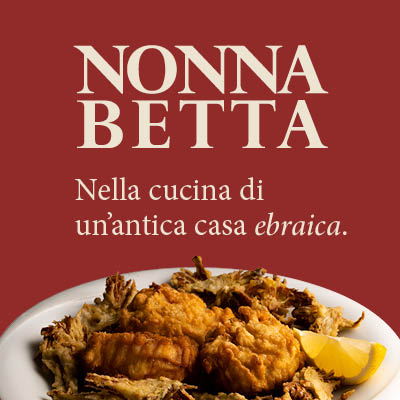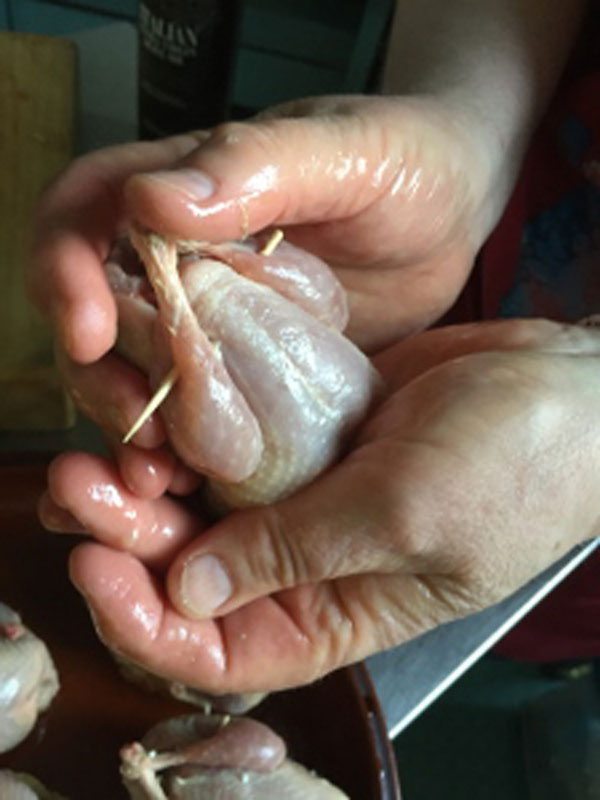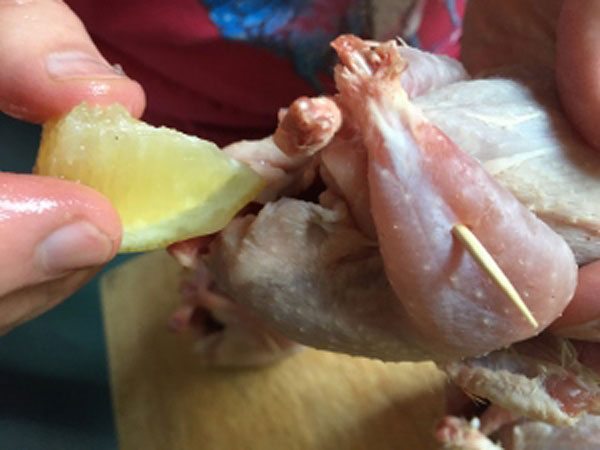Questo articolo è pubblicato postumo alla scomparsa del nostro Amico e Autore Gareth Jones.
Come cuoco il mio primo amore è di sicuro il pollo, ma tutto il pollame in genere incontra i miei gusti. Quando sento ‘Civitavecchia’ cantato ad alta voce in ‘Tosca’ mi ricordo subito la prima volta che ho mangiato le quaglie.
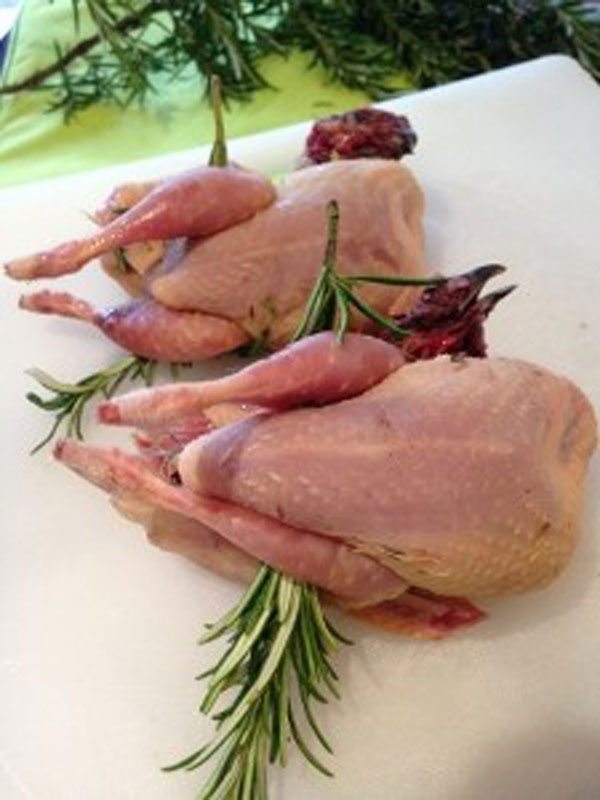
In una locanda in un’estate nei primi anni 1970, abbiamo banchettato con le quaglie cotte alla griglia sul fuoco di legna – fermate con il rametto di rosmarino fresco. C’erano tre uccelli su ogni piatto – ricordo bene il rametto di rosmarino per uno spiedo che li tiene insieme e mezzo limone tagliato a metà. Il traffico passava lungo la strada per Roma, e in un attimo di pazzia abbiamo deciso di proseguire dopo il pranzo per arrivare a Roma alle 4 del pomeriggio di un caldo giorno di luglio, senza alcun programma sul dove andare che lasciava trapelare da solo quella che era già la mia follia per l’Italia.
Le quaglie sono arrivate anche in Inghilterra. La madre di uno dei fondatori del Team del Lunghouse è stata pioniera nell’allevamento di quaglie per le uova. Come per il latte nella produzione di uova, anche gli agricoltori con standard di benessere più elevati hanno poco bisogno dei maschi. Una Quaglia deporrà dozzine di uova preziose nella sua vita; gli uccelli maschi sono invece indicati nelle tabelle aziendali come sottoprodotto nell’allevamento di quaglie.

Una volta, quando giù a Castelnaudary sono stato invitato dagli agricoltori della Cooperativa Lauragais costituita per fondare il macello delle quaglie.
Ero stato molte volte in un macello di polli, ma questa è stata la mia prima volta in uno progettato per quaglie.
Immaginate, se volete, la versione giocattolo di un bambino di un macello progettata da Playmobil.
Il posto era immacolato, allestito con gli stessi ceppi e catene come un mattatoio per polli su larga scala, ma il tutto in scala molto più piccola e si trovava in un posto poco più grande di un garage per due grandi trattori.
La quaglia è un piccolo uccello buffo!
Fa parte della famiglia dei fagiani e delle pernici, e come questi ha notevoli difficoltà a volare. Hanno corpi arrotondati e piccole ali, per cui non sono più adatti al volo se non per piccolissimi tratti per sfuggire ai loro predatori. I cacciatori sanno che si può camminare sulla coda di fagiano prima che possa prendere il volo. Le quaglie selvatiche sono rare in Inghilterra ora e confesso di averne mai viste in natura.
L’allevamento all’aperto è essenziale per una buona qualità di quaglie.
Gli spagnoli e i francesi fanno un buon lavoro con le quaglie – sono sempre presenti nei loro armadi frigo riservati al pollame e nei loro supermercati e mercati.
In Inghilterra hai bisogno di un buon macellaio o un droghiere cinese per acquistare quaglie fresche. La resa è buona e il prezzo giusto – quattro uccelli per £ 5,50 era il prezzo di questa settimana. In Francia siamo soliti pagare 8 € per otto uccelli.
Ci vengono spesso vendute solo eviscerate con le teste ancora attaccate che per una buona presentazione sono infilate sotto un’ala.
Le quaglie fresche sono sempre uccelli di circa 8-12 settimane di vita.
Le quaglie cucinate all’aperto e mangiate con le mani sono una delizia – ma l’estate non è così amica da noi per consentirci di mangiare sui prati. In ragione di ciò arrostisco gli uccelli in una teglia per arrosti in acciaio – preparandoli come segue.
Ogni uccello ha le gambe appuntate insieme con un bastoncino da cocktail (o un rametto di rosmarino) dopo aver avuto un pezzo di limone non trattato, una foglia di alloro strappato e una spolverata di sale marino grosso nella cavità. Ma anche uno spicchio d’aglio schiacciato va bene, come vanno bene ginepro, rosmarino o timo. A Valencia spesso cucinnavamo quaglie (codorniz) da crudo, con morcilla, teste d’aglio intere, zafferano e Pimentón nel Arroz al Horno – ‘riso al forno’.
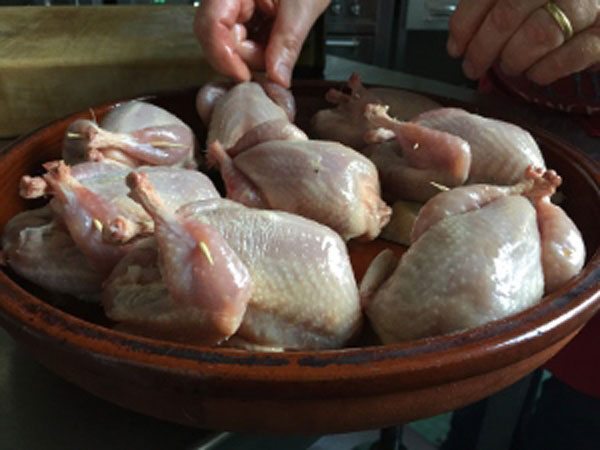
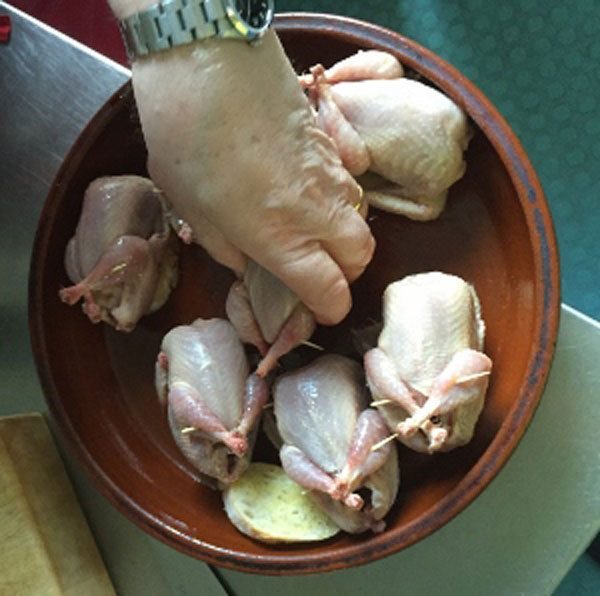
Io preferisco rimanere semplice. Io ungo ogni uccello con l’olio e lo poggio su una fetta di pane – che poi condirò con patè o tapenade. Il pane sarà croccante nella parte inferiore e fa da buon accompagnamento per le quaglie.
Una polenta cremosa va sicuramente bene – che è poi il modo di servire nel nord italia tutti gli uccelli molto piccoli (uccelletti), da quaglie e tordi, beccacce e beccafichi. Essendo stato chiesto di commentare Elizabeth David dal Chicago Tribune solo la scorsa settimana, ho riletto le sue sezioni su uccelletti e beccafichi dal suo ‘cibo italiano’ del 1954 con i disegni di Renato Guttuso – alcuni dei suoi quadri recentemente in mostra a Londra Estorick Collection.
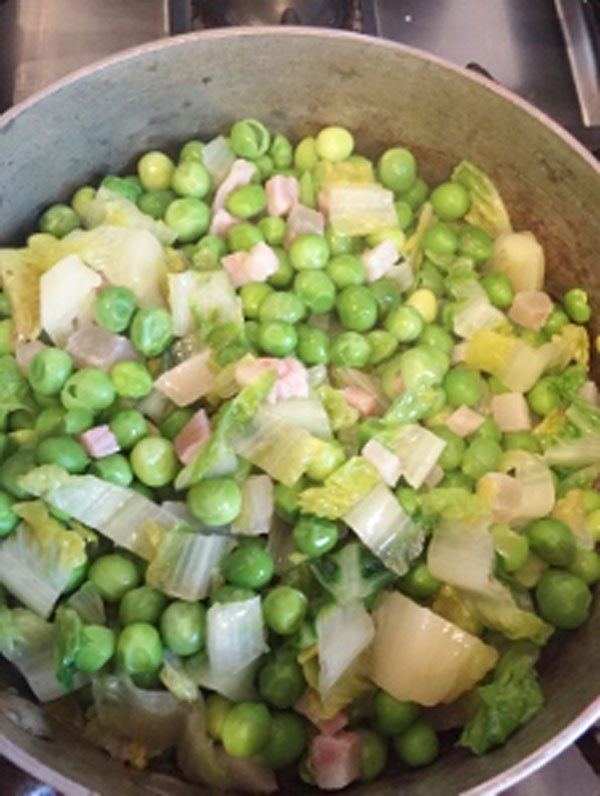
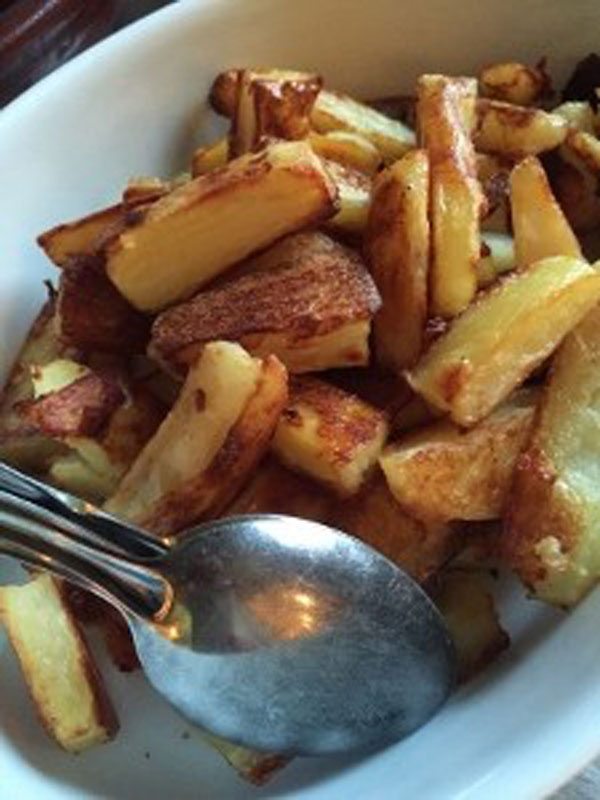
Abbiamo mangiato piselli freschi cucinati con guanciale e lattuga, carote in stile Malmedy No.19 (n.d.t. ricetta più avanti) tagliate spesse, patate arrosto.
La quaglia arrosto fatta in questo modo può essere mangiata anche fredda – ma cercate di evitare il loro mantenimento nel frigo durante la notte o le loro carni si induriranno e il sapore diminuirà.
A Malmedy, nei giorni di gloria del Regno, la signora Teresa Thomas ‘a La Ferme Libert e il suo chef preparavano le carote in un modo che è diventato noto come No 19 Malmedy.
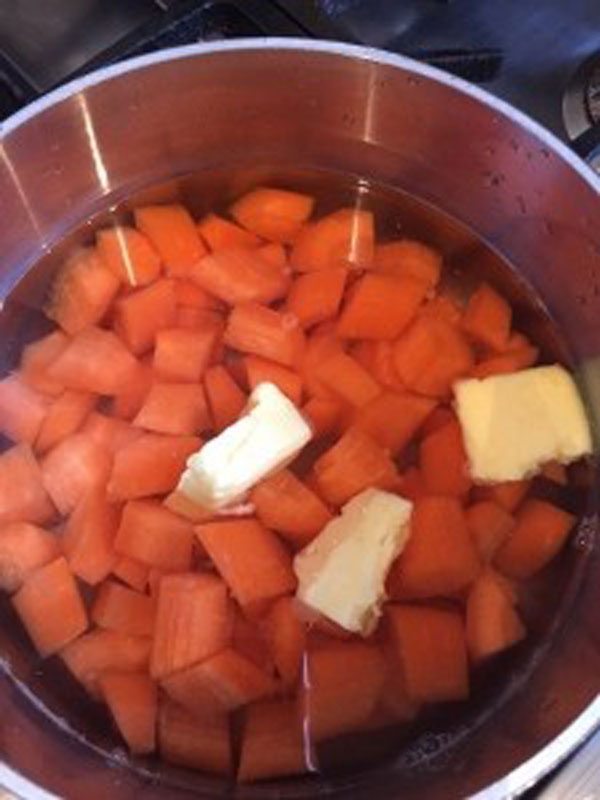
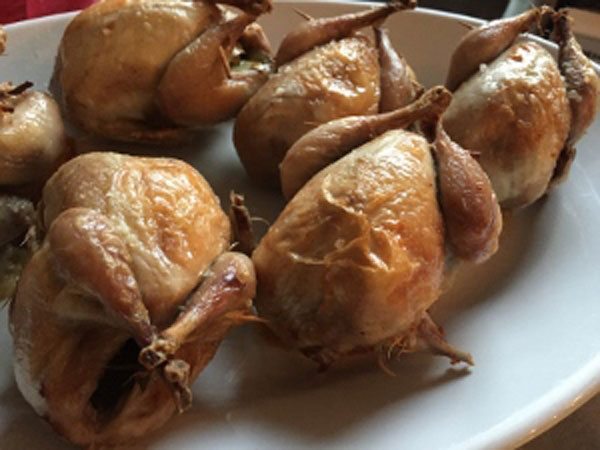
E ‘ molto semplice. Utilizzare solo le grandi vecchie carote. Sbucciate, tagliate a metà nel senso della lunghezza e in mezzo di nuovo se “di diametro maggiore di 2 cm. Coprirle con acqua fredda e aggiungere un po’ di zucchero, un pizzico di sale e due noci di burro di buona qualità. Portare a ebollizione, poi lasciare cuocere fino a quando sono cote ma ancora salde. Togliere le carote e ridurre il liquido di cottura e una volta ridotto rimettere le carote e lasciarle riscaldare. Et Voilà, les carottes Malmedy.
Allo chef del La Ferme Libert piaceva preparare le quaglie alla maniera Liegeoise – bollite in brodo di vitello aromatizzato con bacche di ginepro e Peket – un giovane jenever (gin) tipico di Liegi.
Civitavecchia e Malmedy – due posti con grandi storie. E per noi molti ricordi anche.
di Gareth Jones (A tribute to our Friend)
Original English Version
A funny little bird.
Chicken may be my first bird love as a cook, but all poultry sits well in my back catalogue. When I hear ‘Civitavecchia’ sung loud in ‘Tosca’ I immediately remember my first taste of quail (quaglia).
In a roadside inn one summer in the early 1970s, we feasted on split and spatchcocked quails grilled over a wood fire – these here not spatchcocked but pegged with fresh cut rosemary. There were three birds set on each plate for il secondo – I remember well the rosemary twig for a skewer holding them together and half a lemon from the tree sliced in half as I watched cook send our quail to table. Traffic passed by on the road to Rome and in a mad moment we decided to follow on after that lunch. To hit Rome at 4 in the afternoon on a hot July day, with not a clue where one is going, says something for the craziness already in my soul for Italy.
Quail have come and gone in England. The mother of one of the original Longhouse Kitchen team was a pioneer in raising quail for eggs. Like dairying and egg production, even farmers with highest welfare standards have little need for males. A quail will lay dozens of valuable eggs in her life; the male birds are set for the table as a by-product of the quail farm.
Once when down in Castelnaudary I was invited by the Lauragais farmers’ cooperative to their newly opened abattoir for quail (les cailles). I’d been to many a chicken slaughterhouse, but this was my first time at one designed for quail. Imagine, if you will, a child’s toy version of an abattoir designed by Playmobil. The place was immaculate, fitted out with the same shackles and chains as a large scale chicken abattoir, but all in far smaller scale and set in a place little bigger than a garage for two big tractors.
The quail is a funny little bird. Part of the pheasant and partridge family, they will do all they can to avoid actually taking off. They have rounded bodies and small wings, so are not best suited to flying for anything but fleeing their predators. Beaters know one can tread on a pheasant’s tail before it will take to the air. Partridge are more skittish and take off in coveys which fly over the guns in seconds – that could be the only partridge you’ll see all day and it was gone before you could re-load. Wild quail are rare in England now and I confess to having never seen them in the wild.
Outdoor rearing is essential for a good tasting quail. The Spanish and French do the job well – they are always to be found in the poultry cabinets of their supermarkets and in the markets. In England one needs a good butcher or a Chinese grocer to provide fresh quail. The yield is good and the price fair – four birds for £5.50 was this week’s price. In France we usually pay €8 for eight birds. There they often come effilé (part eviserated) with heads still attached and that makes for good presentation as one tucks the head through the wing. There also good eating around the neck and back of head.
Fresh quail will always be cock birds of around 8-12 weeks of age – so considerably older than the British supermarkets’ standard, accelerated growth, ‘Eggs-on-Legs’ chicken at a hideous 30-32 days from hatching to table weight.
Quail cooked outdoors and eaten with the fingers are a treat – but summer is not quite with us for evening dining on the lawns. Instead, I roast the birds in a cazuela – gentler than a steel roasting tin – prepared as follows.
Each bird has its legs pinned together with a cocktail stick (or rosemary twig) having had a piece of unwaxed lemon, a torn bay leaf and a sprinkle of coarse sea salt in the cavity. A peeled, part crushed garlic clove works well too, as does juniper, rosemary or thyme. The quail is popular in kitchens around the world, so Indian marsala’s, Chinese five spice, chilli pepper and more are all successful. In Valencia we’d often cook quail (codorniz) from raw, with morcilla, whole heads of garlic, saffron and pimenton in the Arroz al Horno – the name ‘Rice in the Oven’ is dangerously mis-leading as this is, for sure, an inspired dish.
I prefer to stay simple. I oil each bird and set it on a slice of bread – gild the lily here by spreading the bread with paté, fresh boudin or tapenade. The bread will crisp on the underside and makes a good accompaniment for the bird.
A creamy polenta is a sympathetic starch – that would be the North Italian way with all tiny birds (uccelletti), from quail and thrushes (tordi), to snipe, woodcock and fig-peckers. Having been asked to comment on Elizabeth David by the Chicago Tribune only this last week, I have re-read her sections on uccelletti and beccafichi from her 1954 ‘Italian Food’ with drawings by Renato Guttuso – some of his paintings recently on show at London’s Estorick Collection
At No 19 we ate fresh peas cooked with guanciale and lettuce, carrots in the Malmedy-style and thick cut roasted Cyprus potatoes – a short season so cook them whilst you can find them in Turkish shops and better greengrocers.
Quail roasted this way also eat well when cold – try to avoid keeping them in the ‘fridge overnight as that will toughen the meat and lessen their taste.
In Malmedy, in the glory days of Madame Thérèse Thomas’ reign at La Ferme Libert, her chef would prepare carrots in a way that has become known at No 19 as Malmedy-style.
It’s this simple. Use only large old variety carrots – not the perfect, pre-washed, no-tasters sold in supermarkets. Peel, cut in half lengthways and in half again if larger than 2″ diameter. Then cut on the bias into mouth-sized pieces. Only just cover with cold water with sugar, salt and two walnuts of good butter. Bring to the boil, then simmer until al-dente. Remove carrots and reduce the cooking liquor to a glaze – return carrots, warm through and watch them sparkle like orange jewels as they come to table. Voilà, les carottes Malmedy – as good as a Malmedy Kiss.
Chef at the La Ferme Libert liked to prepare quails in the Liègeoise way – simmered in veal stock flavoured with juniper berries and Pékèt – a young jenever (gin) special to Liège. The pink breasts would come first to table in their juices with the crushed juniper berries. Ten minutes or so later another dish would appear with the leg/thigh portions – these we’d eat with the fingers.
Civitavecchia and Malmedy – two places with great histories. To us, many memories too.

